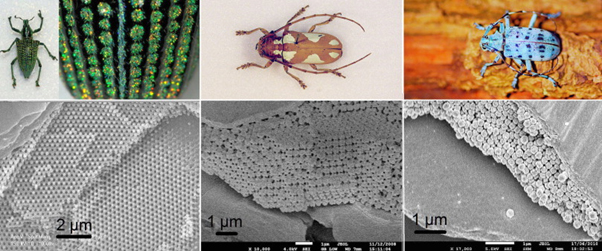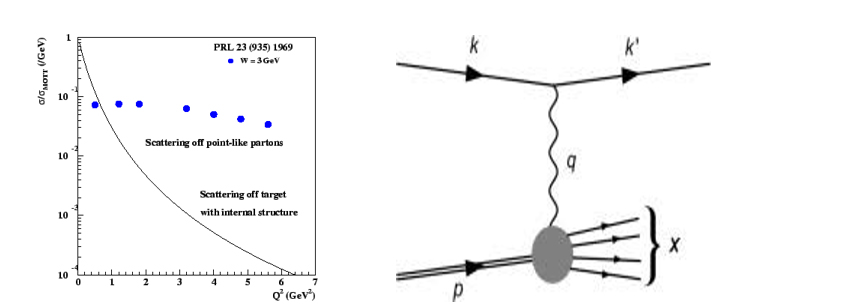বৈদ্যুতিন পড়াশোনা ও বইয়ের ভবিষ্যৎ
চলতি বছরের মাঝামাঝি সময়ে এসে দাঁড়িয়েছি আমরা। সামনে তেমন আশাপ্রদ কিছু নেই। তবু, ঠিক সামলে নেওয়া যাবে, এই ভরসা রেখে চলায় অভ্যস্ত হয়ে গেছি। কিন্তু এই আত্মবিশ্বাসের বুদ্বুদ মাঝে মাঝেই ফেটে যাচ্ছে… যখন কর্মক্ষেত্রে একের পর এক আনকোরা সমস্যা এসে দেখা দিচ্ছে। আমরা যারা সাহিত্য পড়াই, তাদের কাছে এক নতুন চিন্তার কারণ হয়ে দাঁড়াচ্ছে – বইয়ের অভাব।
সাহিত্যের পড়াশোনা চিরকালই বিভিন্ন বিচিত্র ধরনের পাঠ-অভ্যাসের ওপর দাঁড়িয়ে। ছাত্রজীবন থেকেই, বইয়ের দোকানে গিয়ে কে কত দুষ্প্রাপ্য বই খুঁজে বার করতে পারে, তা আমাদের প্রিয়তম বিনোদন। বইয়ের খবর রাখা, কেনা, পড়ে ফেলা, উৎসাহ পেলে সে বিষয়ে আরও বই জোগাড় করা, লেখকদের তত্ত্বের তুল্যমূল্য বিচার – এ সবই আমাদের চর্চার অবিচ্ছেদ্য অঙ্গ। সাহিত্যের ছাত্র, শিক্ষক, গবেষকের সংস্কৃতি গড়ে ওঠে বই নিয়ে। আজ বই-ব্যবসায় বিরাট ধ্বস নেমেছে।
আজ প্রেস বন্ধ, অক্ষরকর্মীদের কাজ নেই, বইপাড়া খাঁ খাঁ করছে। কোনও অজ্ঞাত কারণে বই আমাদের ‘এসেনশিয়ালস’ হয়ে উঠতে পারেনি আজও, তাই বিভিন্ন শহরে বইয়ের দোকান বন্ধ। আমাদের পড়ানোর সম্বল বলতে নিজস্ব পুঁজি থেকে ছবি তুলে পাঠানো এবং পিডিএফ খুঁজে দেওয়া।
ছবি তুলে পাঠানোয় অসুবিধা কিছু নেই। কিন্তু সীমিত সময়ে, সীমিত বিষয়ের ছবিতোলা পৃষ্ঠা পড়ে কতটুকু সম্যক জ্ঞান লাভ হয় একজন ছাত্রের? একটি বইয়ের ভূমিকা, এমনকি উৎসর্গপত্র পর্যন্ত আমাদের জানতে হয়। কারণ শুধু বইয়ের শরীর নয় – একজন সাহিত্যিক বা তাত্ত্বিক তাঁর বইয়ের সর্বাঙ্গে থাকেন। বহু কথা বলে দেয় প্রচ্ছদ। সূচিপত্র সাজানোর ধরন। পাদটীকায় সরস টিপ্পনী আমাদের পৌঁছে দেয় তাঁর কাছাকাছি। বারবার পড়তে পড়তে আচমকা নতুন কোনও এক বোধে উন্নীত হওয়া, তার জন্য একটা বইয়ের সঙ্গে যাপন করতে হয় অনেকগুলো দিন। বইয়ের সঙ্গে সেই ‘ফিজিক্যাল’ অভিজ্ঞতা থেকে বঞ্চিত হচ্ছে এখনকার ছাত্রছাত্রীরা।
পিডিএফ-এও সেই সমস্যা থাকে। তাছাড়াও – প্রথমত বাংলা বইয়ের পিডিএফ খুব কম হয়। যা পাওয়া যায় তা একটি-দুটি সাইটে। এখন, পিডিএফ মাত্রই বিনামূল্যে পাওয়া যাবে এরকম একটা ধারণা অল্পবয়সিদের রয়েছে। ‘বিনামূল্যে সিনেমা, গেম, app যখন পাওয়া যাচ্ছে – তখন বই কেন দাম দিয়ে কিনব?’ এই ভাবনা থেকে অনেকেই বই অনলাইন কিনতে চাইছে না। আর এই চাহিদার সুযোগ কাজে লাগিয়ে অনেকেই ব্যক্তিগত উদ্যোগে মূল্যবান, নতুন বইয়ের পিডিএফ বানিয়ে ইন্টারনেটে ছাড়ছে। তাদের সাধুবাদ জানাচ্ছে অনেকেই, সংকটে পাশে থাকার জন্য। কিন্তু একই সঙ্গে তা বইয়ের ব্যবসায়ীদের কফিনে শেষ পেরেকটিও ঠুকে দিচ্ছে।
একটা বই প্রকাশ পাওয়ার এক বছরের মধ্যেই যদি পিডিএফ চলে আসে এবং বাজারে বিনামূল্যে পাওয়া যায়, কেউ সেটা আর দোকান থেকে কিনতে যাবে না। বাড়িতে পড়াতে পড়াতে প্রায়শই এমন অভিজ্ঞতা হচ্ছে – কোনও রেফারেন্স বইয়ের নাম বললেই শুনতে হচ্ছে, ‘পিডিএফ পাওয়া যাবে না?’ আমাদের খুঁজে বার করতেও হচ্ছে, কারণ লকডাউনের বাজারে তারা আর কোথায় বই পাবে? কিন্তু সমস্যা হচ্ছে, এই যে বই থেকে সরতে থাকা- লকডাউন পরবর্তী সময়েও এটাই আমাদের অভ্যাস হয়ে যাবে। আমরা আর ছুঁয়ে দেখব না হার্ডকভার, পেপারব্যাক, নানা রঙের নানা গন্ধের বই। আমরা আর কখনও চিনব না কাগজে ছাপা অক্ষরের দিকে তাকিয়ে ভাবনায় হারিয়ে যাওয়ার সুখ। আমাদের ছেলেমেয়েরা ছোট্ট স্ক্রিনে, চোখের সর্বনাশ করে ক্ষুদে ক্ষুদে হরফ পড়বে। সাবধানী মা-বাবারা কিন্ডল কিনে দেবেন। বেড়ে উঠবে ফ্রি পিডিএফ ডাউনলোডিং সাইট। আর ক্রমশ অন্ধকারে হারিয়ে যাবে বইপাড়া। আমরা আর বই পড়ব না, বই লিখবও না, ক্রমশ আরও নতুন নতুন ডিজিটালাইজড উপায় বের করব সরাসরি লেখা ছাপানোর। আর মানুষ সভ্যতার ইতিহাসে পাওয়া এক মহার্ঘ্য আশীর্বাদ স্রেফ অনভ্যাসে ভুলে যাবে। ভুলে যাবে লেখা, ভুলে যাবে তাকে হাতেকলমে সংরক্ষণের উপায়।
তারপর একদিন কারও ফোন চুরি হবে। ল্যাপটপ খারাপ হয়ে যাবে। হঠাৎ বিচ্ছিন্ন হয়ে যাবে বিদ্যুৎ সংযোগ। আর দিশেহারা হয়ে সে দেখবে, তার আর কোনও উপায় নেই লেখাগুলোর কাছে ফিরে যাওয়ার। সে ছুটবে বহুদিন না যাওয়া বইয়ের দোকানে, আর দেখবে, সেখানে মিউজিয়াম তৈরি হয়ে গেছে এক দশক হল।
আমাদের বইয়ের কাছে না ফিরে উপায় নেই। যতই ডিজিটাল সংরক্ষণ হোক… সে জিনিস আদতে কিছু ডেটা মাত্র, যা tangible নয়। আমাদের কিছু ইন্দ্রিয়গ্রাহ্য উপায় রাখতেই হবে আলাদা করে… যাতে ভবিষ্যতের কোনও বৈদ্যুতিন মহামারী আমাদের জ্ঞান থেকে বিচ্ছিন্ন করে না দেয়।
বই কিনুন। বই কিনতে বলুন। পিডিএফ এত সহজলভ্য করে দেবেন না। যখন না হলেই নয়, যখন কারও উপায় নেই, সাধ্য নেই, শুধু তখনই এর সাহায্য নিন। যে সত্যিই পড়তে চাইছে তার হাতে একটা বই কিনে তুলে দিন। কিনতে যেতে পারছেন না? তাহলেও পিডিএফ নয়… সত্যিকারের বই ডেলিভারি দেয় যে অনলাইন সাইটগুলো, তাদের অর্ডার দিন, বাড়িতে পৌঁছে দেবে।
যে মানুষগুলো প্রেসে অক্লান্ত পরিশ্রম করে, বই বাঁধে, গাড়ি টেনে দোকানে বই নিয়ে যায়, যারা দোকানে দাঁড়িয়ে নিরন্তর আউড়ে চলে বইয়ের তালিকা, যারা ছাপার যন্ত্র বানায়, যারা কাগজ বেচে, যারা প্রুফ দেখে … যে বই প্রকাশ করে… যে বই লেখে…. এদের সবার, সবার ভবিষ্যৎ আমাদের পাঠকের হাতে। আমরা যেন বিনা খরচে জ্ঞানলাভের শর্টকাট নিতে গিয়ে একটা গোটা পৃথিবীকে নষ্ট করে না দিই।
ভবিষ্যতের পৃথিবীতে লাইব্রেরিরা যেন এক-একটা স্মৃতিসৌধ হয়ে না ওঠে।
























